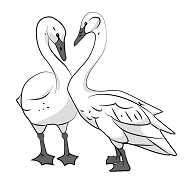I am reading for the second time, The Hidden Life of Trees, by Peter Wohlleben. This has spurred memories of events in my life and caused me to think of them in a completely different context. I lived with my grandmother and my step grandfather when I was just a toddler. He was a lumberjack and ran a sawmill high in the Rocky Mountains of Colorado. I would play in the hills of sawdust made by the operation. Giant trucks loaded with logs and secured with giant chains, from trees that had been felled, was a common sight chugging down the mountain side. I remember walking with my grandmother through the forest, a safe distance from where they were cutting down the trees. She pointed out the wild columbine, and other wildflowers to me, as we meandered through the pine scented trees.
Many years later, I lived for a few years on a mountaintop in Tennessee. I remember being sickened by the clearcutting of adjacent mountains, left barren and lifeless, as though they had been raped. I recall walking through these areas along rutted dirt roads where smaller trees had been left strewn about as unwanted debris. I was told that this was okay because trees were being replanted to replace the ones that had been cut.
The problem is that the “replacement” is a monoculture of white pine, which succumbs to the white pine weevil. The weevil spreads its destruction to native trees such as Colorado Blue Spruce, as well as other pines and spruces. I began to hear that the price of wood had risen considerably over the years and much of today’s furniture is made with particle board, or basically sawdust pressed into boards to look like wood. With the loss of our mighty oak and maple forests, most of the wood sold these days is the softer pine wood.
When my step-grandfather was cutting trees back in the 1950’s he probably never thought that we would one day be running out of trees. I doubt he was the least bit concerned about the habitat that was being destroyed, or the loss of species. I know that his methods were not as destructive as those used today. He used horses to help haul the trees out. I remember one horse that had a patch over his eye because a tree branch had punctured it. Prior to chain saws and bulldozers, trees were cut with axes and handsaws, which limited what could be taken from a forest.
We cannot hear the cries of the trees as they are murdered one by one. They do not cry tears, but weep sap. Do they feel the same terror that we feel, when our children and our own lives are threatened? Clearly there are not enough trees in the world to sustainably support a human population of 8 billion and we must seek out alternatives. Now; however, as I lay sleeping on my oak bed and look around at my few pieces of wood furniture, my love for them is deepened. The wood that has been beautifully carved into a lovely and functional piece of art, was once a living, breathing tree. Axe murders have given way to mass destruction of forests, just as bombs have replaced face to face combat among soldiers.



